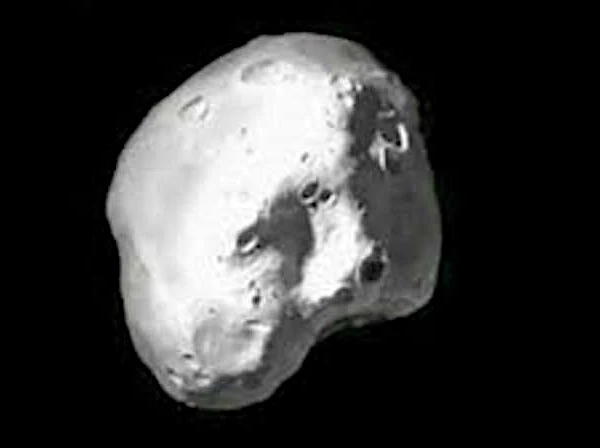
Juno, officially designated 3 Juno, is one of the largest asteroids in the main belt. Discovered in 1804 by German astronomer Karl Harding, Juno is the third asteroid to be identified, after Ceres and Pallas.
Juno is an S-type asteroid, meaning it is primarily composed of silicates and metals. It has an average diameter of approximately 234 kilometers, making it one of the largest asteroids in the main belt. Its shape is irregular, with approximate dimensions of 320 x 267 x 200 kilometers.
One of the most remarkable features of the asteroid Juno is its immense impact crater. This crater is the result of a collision with another celestial body, likely a smaller asteroid. Its impressive size testifies to the violence of the impact that shaped Juno's surface.
The exact dimensions of the crater are not precisely known, but observations suggest it could cover a significant portion of the asteroid's surface. Analysis of images and data collected by telescopes allows scientists to estimate the energy released during the impact and study its effects on Juno's internal structure.
Studying this crater provides valuable clues about the history of collisions in the solar system. By examining the crater's morphology and the ejected materials, astronomers can better understand the processes that have shaped asteroids and planets over time.
The asteroid Juno orbits the Sun at an average distance of 2.67 astronomical units, with an orbital period of approximately 4.36 Earth years. Its rotation is rapid, with a period of only 7.2 hours, which is relatively short for an asteroid of this size.
Juno is of great interest to astronomers due to its composition and size. Studies of this asteroid can provide valuable information about the formation and evolution of the solar system. Additionally, its surface shows signs of crater impacts, which can help understand the history of collisions in the asteroid belt.
Interplanetary space is far from empty; it is littered with dust and matter dating back to the creation of the solar system. Asteroids are primarily located in the main belt, between the orbits of Mars and Jupiter (between 300 and 600 million km from the Sun). Hundreds of thousands of objects are cataloged there. All these objects could have formed a planet in this zone, but Jupiter's gravitational perturbations did not allow it.
| Asteroids | Approximate dimensions |
Discovery date |
| Ceres 1 | 974.6 km | 1801 |
| Pallas 2 | 582×556×500 km | 1802 |
| Vesta 4 | 572.6x557.2x446 km | 1807 |
| Hygiea 10 | 530x407x370 km | 1849 |
| Sylvia 87 | 384x262x232 km | 1866 |
| Hektor 624 | 370x195x195 km | 1907 |
| Europa 52 | 360x315x240 km | 1858 |
| Eunomia 15 | 357x355x212 km | 1851 |
| Davida 511 | 357x294x231 km | 1903 |
| Interamnia 704 | 350.3x303.6 km | 1910 |
| Camilla 107 | 344x246x205 km | 1868 |
| Juno 3 | 320x267x200 km | 1804 |
| Cybele 65 | 302x290x232 km | 1861 |
| Hermione 121 | 268x186x183 km | 1872 |
| Euphrosyne 31 | 255.9 km | 1854 |
| Chariklo 10199 | 248x258 km | 1997 |
| Iris 7 | 240x200x200 km | 1847 |
| Psyche 16 | 240x185x145 km | 1852 |
| Daphne 41 | 239x183x153 km | 1856 |
| Kalliope 22 | 235x144x124 km | 1852 |
| Amphitrite 29 | 233x212x193 km | 1854 |